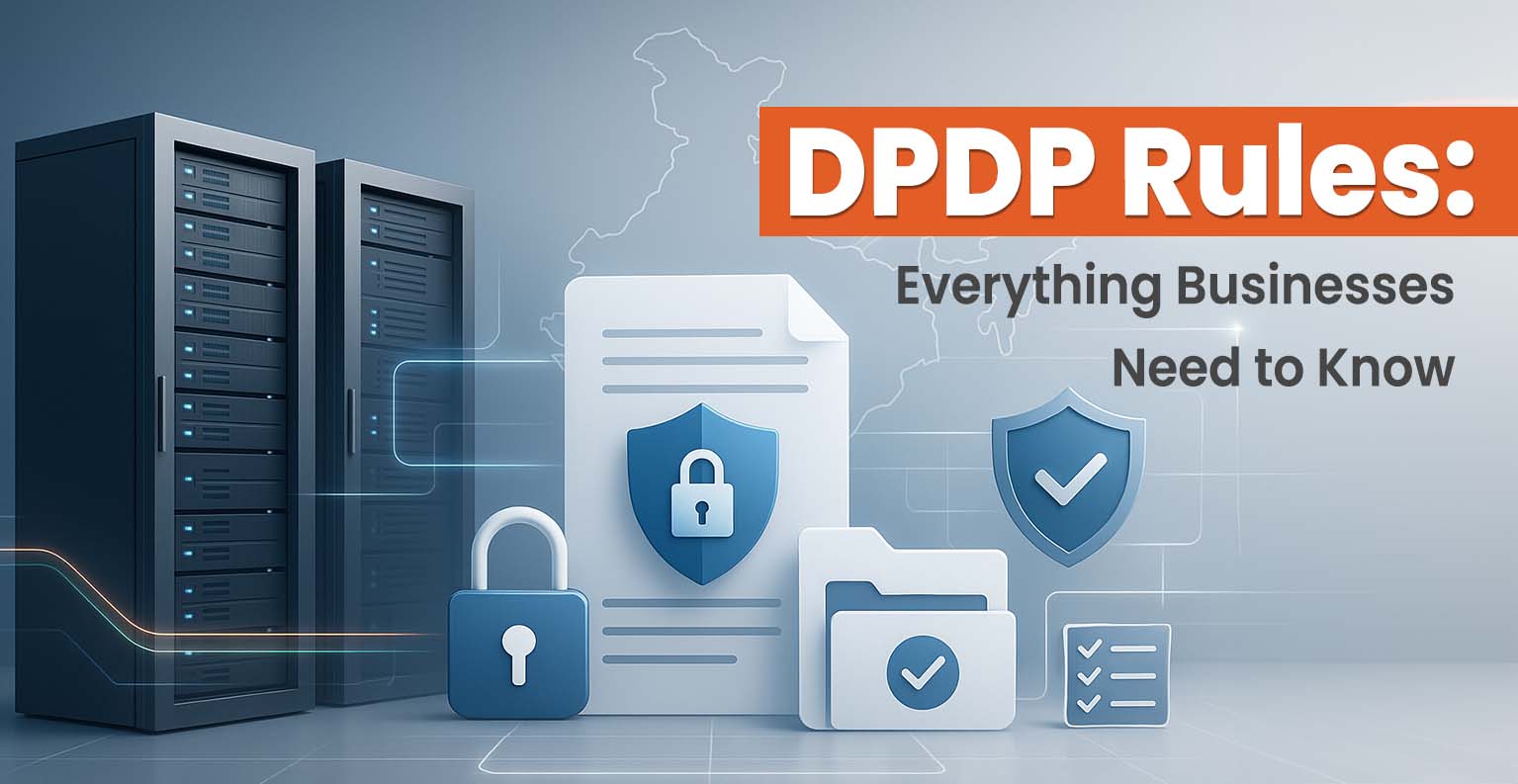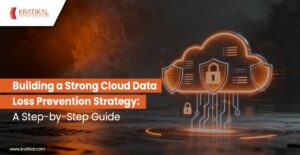India’s Digital Personal Data Protection Act (DPDP), 2023, signaled the country’s commitment to building a modern and globally aligned privacy framework. With the release of the Digital Personal Data Protection Rules (DPDP), 2025, organisations now have a clear, actionable blueprint for how they must collect, store, process, protect, transfer, and ultimately erase personal data. These rules introduce new responsibilities, impose strict timelines, and establish a governance structure far more comprehensive than many businesses anticipated.
To appreciate the scale of transformation these Rules demand, it is essential to walk through them in a narrative, connected, and deeply detailed manner.
Table of Contents
- 1 Book Your Free Cybersecurity Consultation Today!
- 2 Get in!
- 2.0.1 Data Retention and Erasure: Ending Indefinite Data Storage
- 2.0.2 Stronger Protections for Children and Presons with Disabilities
- 2.0.3 Empowering Individuals Through Rights and Grievance Mechanisms
- 2.0.4 A Balanced Approach to Cross-Border Data Transfers
- 2.0.5 Government Powers and Exemptions
- 2.0.6 Conclusion
- 2.0.7 FAQs
Understanding the Structure and Enforcement Timeline
The Rules will not apply all at once. Instead, the government has chosen a staggered rollout so that organisations have time to build capabilities and realign their systems. Some rules, such as basic definitions, applicability, and several governance provisions, are already in effect from the day of publication. Others, especially those linked to operationalising consent, registering consent managers, constructing rights-request workflows, and enabling cross-border data transfers, will only come into effect over the next 12 to 18 months.
The government uses this phased approach to demonstrate its commitment to strong privacy protection while also recognising that sudden full-scale compliance could disrupt businesses.
Major Insights From DPDP Rules
- Clear Definitions for Compliance (Rule 2)
The Rules introduce precise definitions, such as User Account, Verifiable Consent, and Techno-Legal Measures, to establish uniform interpretation and remove ambiguity across all data processing activities. - Mandatory Plain-Language Notices (Rule 3)
Data Fiduciaries must give users an independent, simple, and itemised notice before collecting personal data, explaining what data they will collect, why they need it, and how users can exercise their rights. - Stricter Governance for Consent Management (Rule 4 & First Schedule)
Consent Managers must register with the Government, maintain high technical and organisational standards, store consent records for seven years, and ensure neutrality and transparency in managing user consent. - Minimum Security Standards for All Organisations (Rule 6)
The Rules mandate encryption, access controls, monitoring, logging, backups, and one-year minimum data retention, setting a legally enforceable baseline for cybersecurity. - Mandatory Breach Reporting Within 72 Hours (Rule 7)
Organisations must inform both the affected individuals and the Data Protection Board immediately after a breach, followed by a detailed report within 72 hours. - Defined Data Retention & Erasure Obligations (Rule 8 + Third Schedule)
Personal data must be erased when no longer necessary, with 48 hours’ advance notice to users. Certain platforms like e-commerce, gaming, and social media must follow specific retention timelines. - Enhanced Protections for Children, Rights Handling & Cross-Border Data Transfers (Rules 10–16)
Strict parental verification is required for children’s data, while Rule 14 outlines clear rights for users, including access, correction, erasure, and grievance redressal. Rule 15 allows cross-border data transfers with Government oversight.
Book Your Free Cybersecurity Consultation Today!
The New Era of Transparent Notice and Informed Consent
One of the most defining changes introduced by the DPDP Rules, 2025, is the expectation around how Data Fiduciaries must communicate with individuals before collecting their data. The traditional approach of burying disclosures inside lengthy terms and conditions is no longer acceptable. Instead, organisations must provide a notice that stands independently, is written in plain and simple language.
The Rules clearly require organisations to describe the data they collect in itemised detail, not through vague categories or umbrella terms. If a service collects a mobile number, email address, browsing behaviour, IP address, purchase history, or device identifiers, it must explicitly list each of these.Additionally, the purpose must be equally specific. Statements like “for service improvement” or “for business operations” will no longer be considered compliant.
Just as importantly, the notice must include a direct method, typically a link, through which users can withdraw consent or exercise any of their rights under the DPDP Act. This shifts the power dynamic in favour of the individual and ensures that consent is not a one-time decision.
Consent Managers: A New Governance Layer Unique to India
The Rules dedicate significant attention to the role of Consent Managers, a uniquely Indian innovation. These entities act as intermediaries through which individuals can manage all their data permissions across different platforms. The Rules specify strict requirements for registration, including financial minimums such as maintaining a net worth of at least two crore rupees, and technical capabilities robust enough to support large-scale consent management.
A Consent Manager must operate with complete neutrality and cannot use or access the personal data it handles. Its purpose is to facilitate consent, giving, reviewing, managing, and withdrawing it, without exploiting any underlying data. The Rules indicate that every Consent Manager will need an interoperable platform, meaning individuals should be able to manage consents across multiple services using a unified system.
Additionally, Consent Managers must maintain a detailed record of all consents, notices, data sharing logs, and withdrawals for at least seven years. This long retention timeline indicates how central the government believes auditability and traceability are in a digital ecosystem where data flows effortlessly across systems and organisations.
Security Safeguards: A Mandatory Shift Towards Mature Cybersecurity
The Rules transform what organisations can consider “reasonable security safeguards.” Instead of broad, loosely defined expectations, the government now outlines specific minimum measures every Data Fiduciary must implement. This includes encryption, masking or tokenisation, strict access controls, continuous logging of data access events, monitoring of systems to detect anomalies or unauthorised access, and maintaining secure data backups.
These requirements reflect global cybersecurity best practices, aligning Indian regulations with standards seen in Europe, Singapore, Australia, and the United States. More importantly, they clarify that security is not optional. A breach resulting from weak or outdated controls will likely be considered a violation, increasing liability for organisations that fail to modernise their protections.
Interestingly, the Rules extend these obligations beyond Data Fiduciaries. Every Data Processor, whether a cloud provider, SaaS vendor, development partner, or outsourced operational team, must comply with the same level of safeguards. Contracts need to be rewritten, vendor evaluations must be strengthened, and continuous oversight becomes essential.
A Regorous Framework for Breach Notification
The DPDP Rules introduce a clear, structured approach to breach notifications. When a personal data breach occurs, organisations must notify affected individuals as soon as possible. This notification must be meaningful: it must describe what happened, what category of personal data was involved, what consequences users may face, what steps the organisation is taking to mitigate harm, and what the user can do on their end to protect themselves.
Simultaneously, organisations must inform the Data Protection Board without delay. Beyond the initial alert, a comprehensive report must be submitted within 72 hours. This report includes all relevant facts, timelines, the reasons for the breach, remedial measures taken, and the identity of individuals responsible if negligence was involved.
This model is designed to foster accountability. The Rules make it clear that silence, delay, or vague disclosures will not be tolerated. Organisations must treat every breach with urgency and transparency.
Get in!
Join our weekly newsletter and stay updated
Data Retention and Erasure: Ending Indefinite Data Storage
Another major shift in the Rules is the introduction of clear criteria around when personal data is considered no longer needed. Several categories of Data Fiduciaries, especially platforms with large user bases such as e-commerce, online gaming, fintech, and social media, will be required to erase personal data when a user has not returned to the service or exercised their rights for a defined period.
The Rules also require that individuals be informed forty-eight hours before their data is permanently erased. This is an important step, acknowledging that users may want to retain their data for account recovery, legal reasons, or continuity.
Interestingly, even after data is erased, organisations must retain logs and certain metadata for one year, allowing audits, investigations, or regulatory reviews to continue. This strikes a balance between privacy and traceability.
Stronger Protections for Children and Presons with Disabilities
Safeguarding vulnerable individuals is another prominent goal of the Rules. Organisations cannot rely on simple checkboxes or unverifiable declarations for parental consent. Instead, they must validate a parent’s identity and age using government-approved documentation or token-based verification.
For persons with disabilities, the Rules require organisations to verify the legitimacy of guardianship under specific Indian laws. This ensures that consent is truly provided by someone with a lawful and recognised relationship to the individual.
Empowering Individuals Through Rights and Grievance Mechanisms
The DPDP Rules place the responsibility of facilitating user rights squarely on the shoulders of Data Fiduciaries. Organisations must explain, clearly and prominently, how an individual can exercise their rights, including access, correction, erasure, and grievance redressal.
Furthermore, they must create structured internal systems capable of handling these requests. Responses must be timely, and grievance redressal cannot exceed ninety days. Organisations must also allow individuals to nominate someone else to exercise rights on their behalf, a feature that enhances usability and acknowledges attack scenarios.
A Balanced Approach to Cross-Border Data Transfers
Contrary to expectations of strict localisation, the DPDP Rules adopt a flexible approach to cross-border data transfers. Personal data may be transferred outside India unless the Central Government restricts the destination country. This aligns India with several international privacy regimes while still preserving the government’s authority to intervene when national security or strategic concerns arise.
Government Powers and Exemptions
The Rules also clarify the circumstances under which the government may request information from organisations. These include matters related to national security, legal processes, regulatory compliance, or enforcement actions. In sensitive situations, the government may require organisations not to inform individuals about such requests.
At the same time, certain activities such as research, statistical analysis, and archiving are given structured exemptions, provided they comply with the standards outlined in the relevant schedules.
Conclusion
The Digital Personal Data Protection Rules, 2025, are more than just regulatory instructions; they represent a cultural shift in how organisations in India must think about data. Compliance will require updated technical infrastructure, redesigned consent experiences, modern security systems, revamped contracts, new governance models, and a stronger commitment to transparency and accountability.
Organisations that begin preparing immediately will not only avoid penalties but also gain trust in the eyes of users, regulators, and global partners. Those who delay may find themselves overwhelmed by the scale of transformation required.
Want to know more about the DPDP Act? Read The Full PDF
FAQs
- What are the key changes in DPDP 2025?
The DPDP Act 2025 is designed to empower individuals with greater control over their personal information. One of its core principles is Consent Management, which requires organisations to obtain clear, informed, and explicit permission before collecting or processing any personal data.
- What are the exemptions to the Data Protection Act?
Personal data handled by an individual for personal, family, household, or recreational use is exempt from data protection requirements. Such processing does not fall under the obligations outlined in Parts II and III of the Act.








Leave a comment
Your email address will not be published. Required fields are marked *